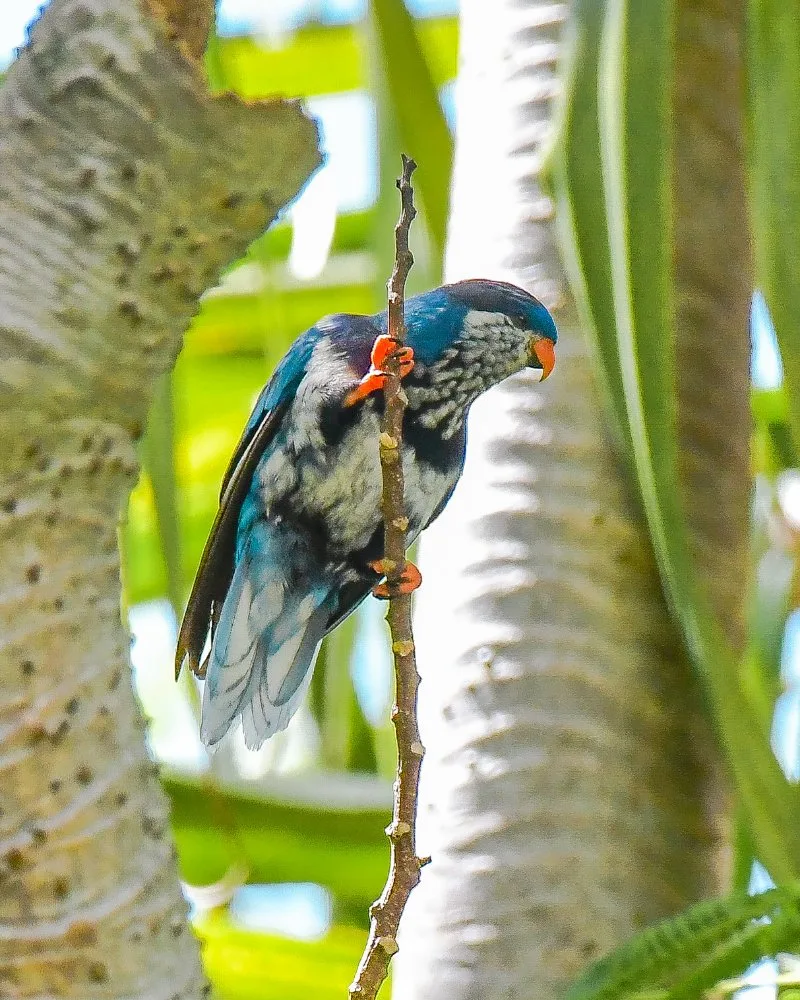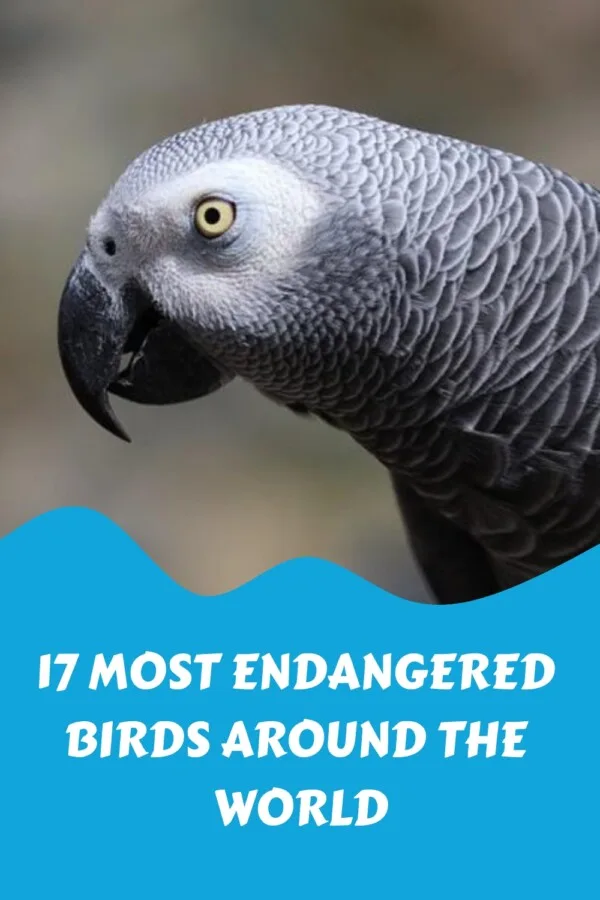Did you know that many birds are on the brink of extinction? It’s sad but true, and we need to do something soon to save them! In this blog post, we’ll look at some of the most endangered birds worldwide and find out what’s causing their populations to decline.
What are endangered birds, and why are they important?
Endangered birds are those species that are at risk of becoming extinct in the wild. They are essential because they are part of the ecosystem working on controlling the population of other flora and fauna. They are also essential pollinators.
How do we know which birds are endangered?
There are a few ways to know which birds are endangered. First, we can look at population numbers. If a bird species has a declining population, it is likely endangered.
We can also look at the bird’s habitat. If a bird’s habitat is shrinking or disappearing, that is another sign that the bird may be endangered.
Additionally, we can look at whether the bird is hunted or collected for food, feathers, or other purposes. If so, this may also indicate that the bird is endangered.
Finally, we can look at the status of the species on lists compiled by various organizations, such as the IUCN Red List or the Endangered Species Act list in the United States.
See Related: Most Endangered Species in Alaska
What’s causing the decline in bird populations around the world?
The main reason for the decline in bird populations worldwide is habitat loss. Humans continue to develop land for agriculture, housing, and industry, destroying birds’ natural habitats to survive.
This habitat loss is compounded by other threats such as invasive species, hunting, and global warming.
Also, climate change, and pollution, make it even harder for birds to find places to live and raise their young.
What can we do to help save endangered birds?
To help save birds on the endangered species list, we need to take action to protect their habitats. It can be done by creating protected areas, planting trees, and reducing our impact on the environment.
How can you get involved in conserving endangered bird species?
You can get involved in conserving endangered bird species by supporting organizations working to protect them. You can also help by creating and protecting habitats for these birds. Educating others about the importance of preserving these amazing creatures is also helpful.
See Related: What is the Goal of Wildlife Conservation?
List of Endangered Birds
Here’s a list of 17 threatened birds that need our help.
1. Black-Browed Albatross
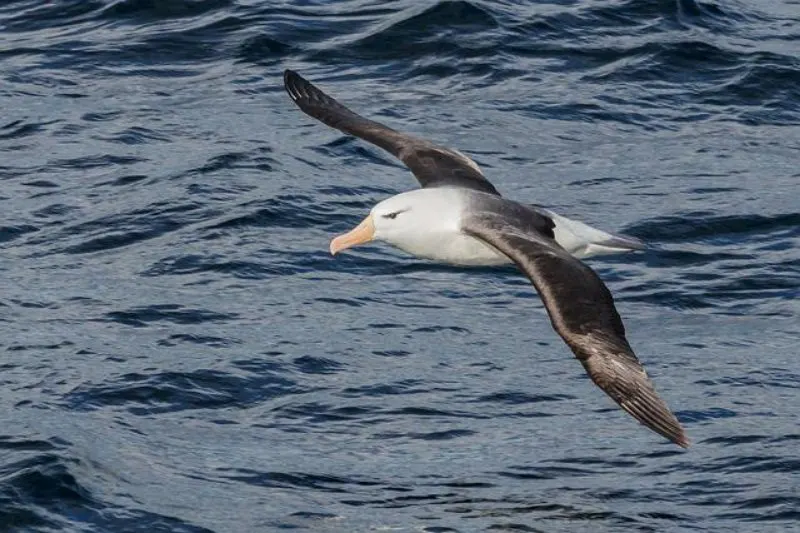
The Black-Browed Albatross is a seabird that is found in the southern oceans. Its population has declined over the last three decades. The main threat to the Black-browed Albatross is longline fishing, where hooks are set out to catch fish.
These hooks often snag albatrosses, then pul them under the water where they drown. Conservation efforts are focused on preventing longline fishing in areas where the Black-Browed Albatross is known to breed.
By working to protect this bird species, we can help to preserve the beauty and balance of our oceans.
See Related: Most Interesting Birds in the World
2. Eskimo Curlew
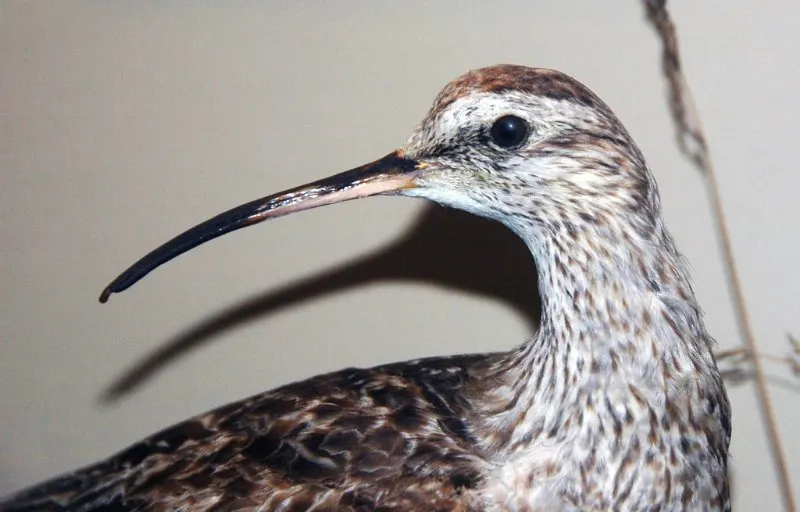
The Eskimo Curlew was once a small bird from the Arctic tundra, but it is now presumed extinct. The Eskimo Curlew was hunted for its meat during the late 1800s and early 1900s.
It is estimated that there are less than fifty survivors in the population of Eskimo curlews at this time. There is a significant chance that the species no longer exists in the wild.
The Eskimo Curlew was a food source for Eskimos and many other birds. The Eskimo Curlew is believed to have declined due to many factors, including habitat destruction, and disease.
See Related: Is Dove Cruelty-Free? What You Need To Know About Their Animal Testing Policy.
3. African Grey Parrot
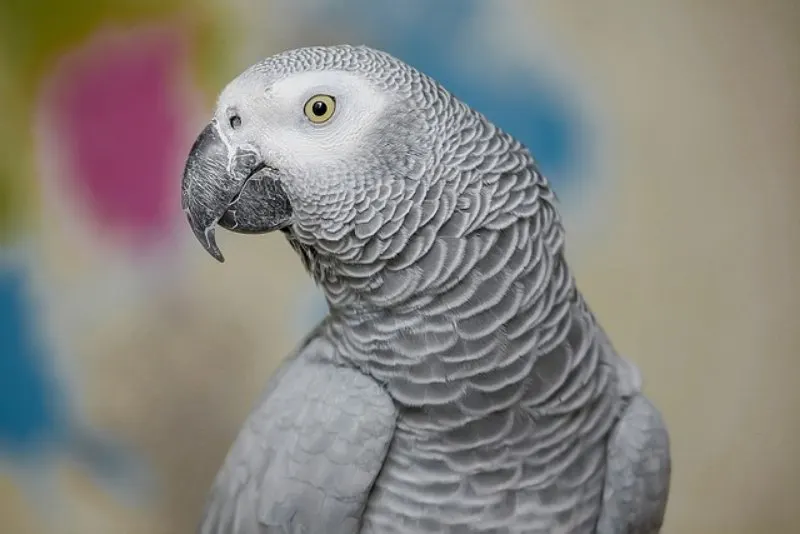
African Grey Parrots are magnificent and critically endangered species. As its name suggests, this species is found in Africa, in the countries of Djibouti, Eritrea, Ethiopia, Kenya, Somalia, Sudan, and Uganda.
African Grey Parrots are gray with red tail feathers. African Grey Parrots are so intelligent that they can mimic human speech, and even hold conversations. African Grey Parrots are popular as pets because of their abilities and friendliness.
However, African Grey Parrots in captivity often live much longer than African Grey Parrots in the wild due to the lack of predators and the availability of food and water.
African Grey Parrots are declining in numbers due to poaching and the pet trade. In recent decades, the wild populations of African Grey Parrots have declined by 99%.
Unlike other species on this list, African Grey Parrots are not directly influenced by habitat losses. Instead, poachers prefer African Grey Parrots because they possess beautiful shades of grey feathers and make great, talkative pets.
4. Hawaiian Crow
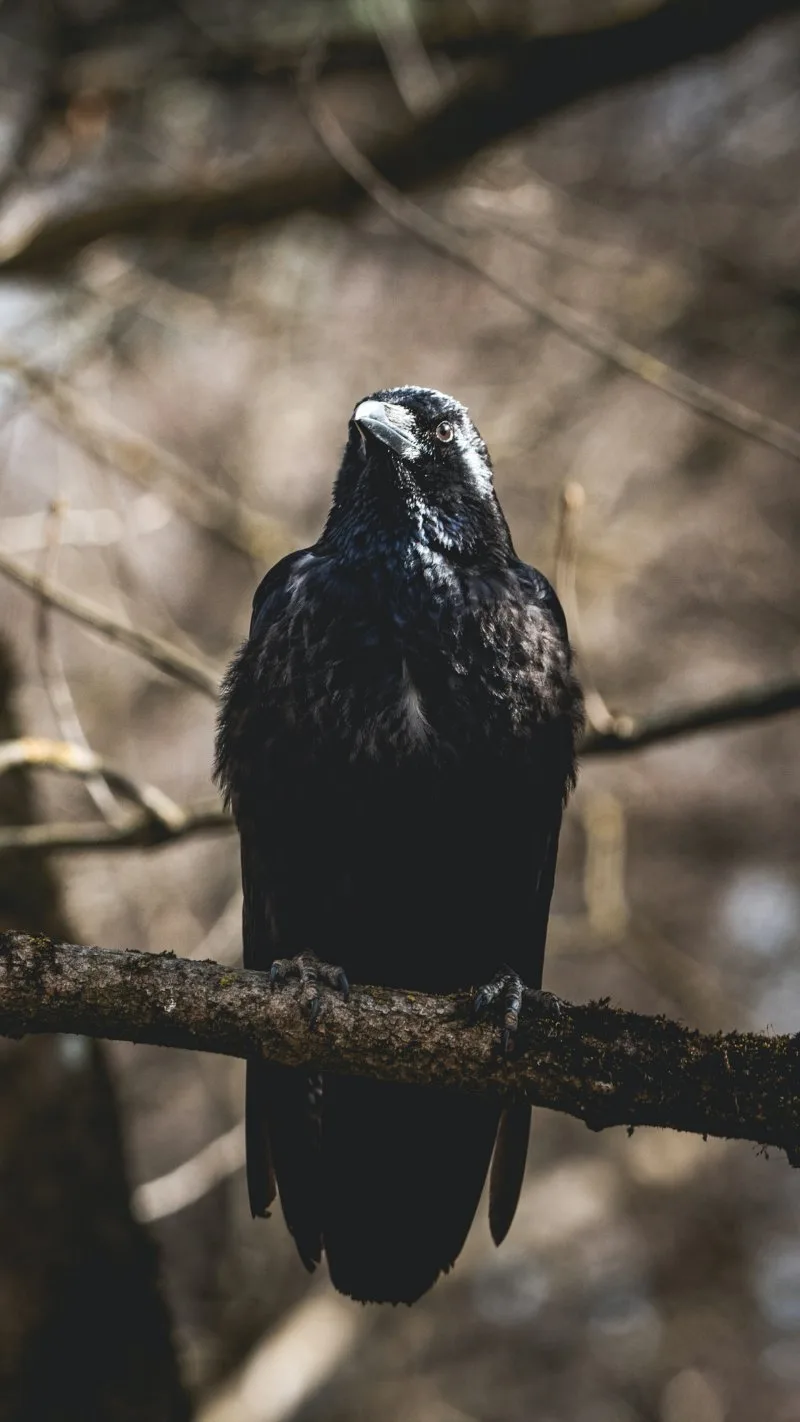
The Hawaiian Crow, once found throughout the Hawaiian Islands, is now only found in captive breeding programs. The main reason for this species’ decline is habitat fragmentation and destruction.
As the human population in Hawaii has grown, more and more land has been developed, leaving less room for these birds to live.
Hawaiian Crows are large birds with wingspan of up to four feet. They are black with a white beak and eyes. Hawaiian Crows eat various things, including fruits, insects, and even small reptiles. Hawaiian Crows mate for life and generally lay two eggs per clutch.
See Related: Black Crowned Crane
5. Fruit Doves
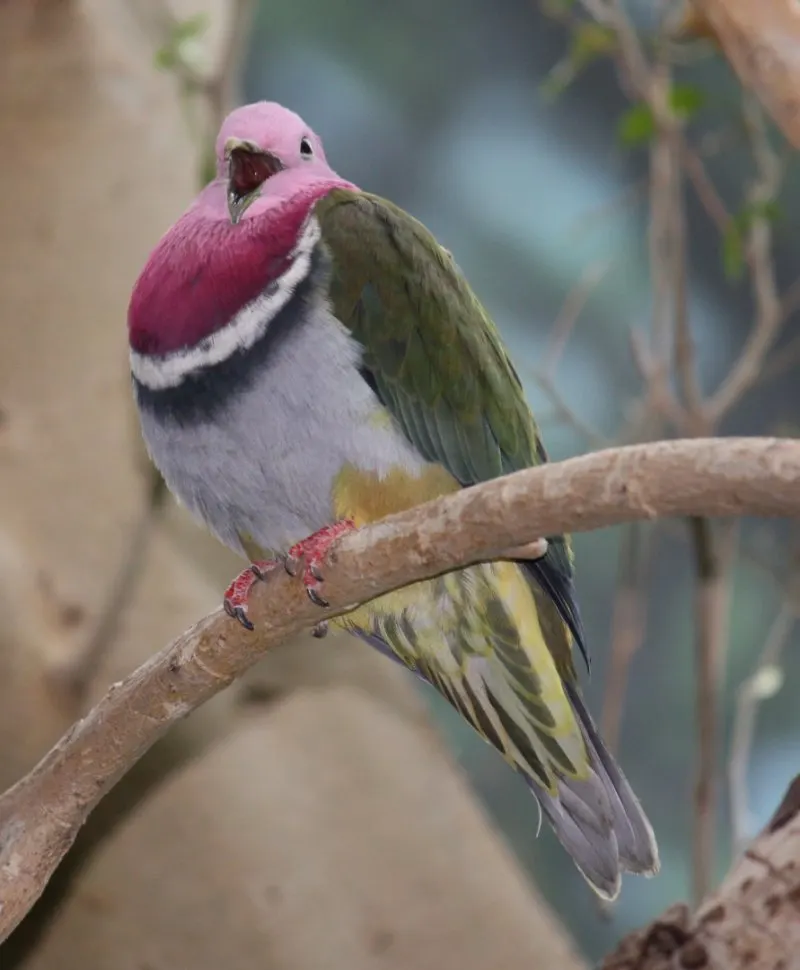
Native to Guam and the Northern Marianas Islands, Fruit Doves have become a threatened species and are expected to vanish quickly. The population has faced multiple threats over the last several years that have drastically accelerated the decrease of its population.
The chief threat is habitat loss. As an official bird for the Marianan Islands, it’s essential to restore fruit dove populations.
6. Piping Plover
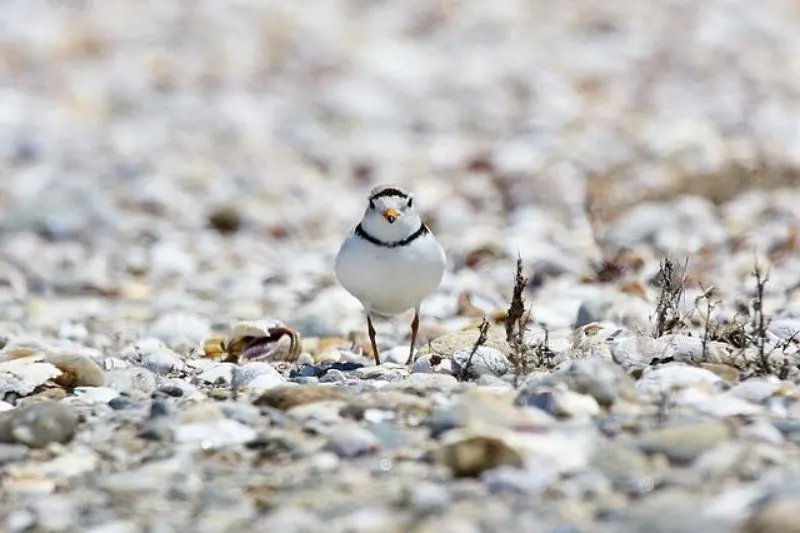
The Piping Plover is a small shorebird that nests on beaches in North America. The species is endangered, and its populations are rapidly declining.
The main threats to the bird are habitat destruction and human disturbance. Nesting beaches are often lost to development or erosion, and birds are disturbed by people walking, driving, and camping on their nesting grounds.
See Related: Spoon-Billed Sandpiper
7. White-Rumped Vulture
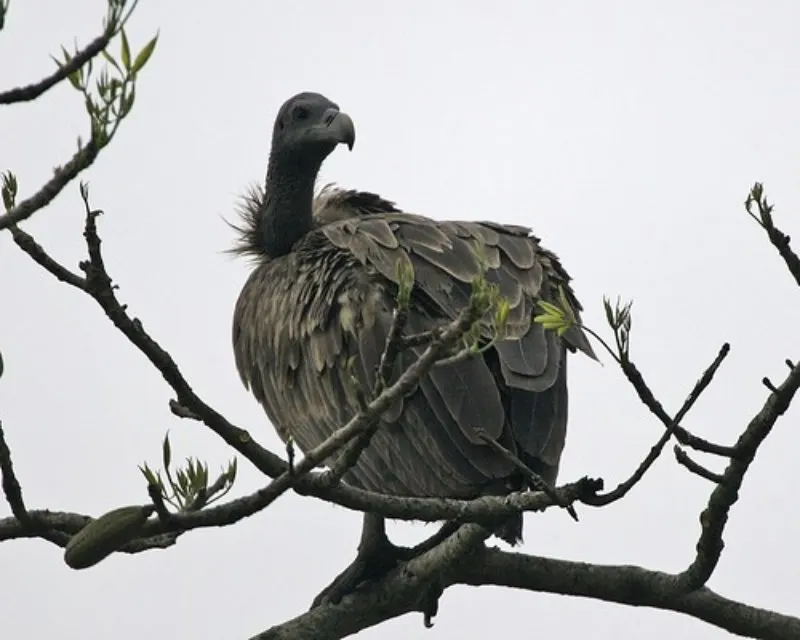
The White-rumped Vulture is one of the most endangered birds in the world. There are only about less than 1,000 left in the wild, and their population is declining rapidly.
These vultures play an important role in the ecosystem by scavenging dead animals. Without them, the environment would be littered with rotting carcasses that could spread disease.
The White-Rumped Vulture decreasing population is likely due to several factors, including poisoning from eating carcasses containing diclofenac, habitat loss, and collision with power lines.
8. Ivory-billed Woodpecker
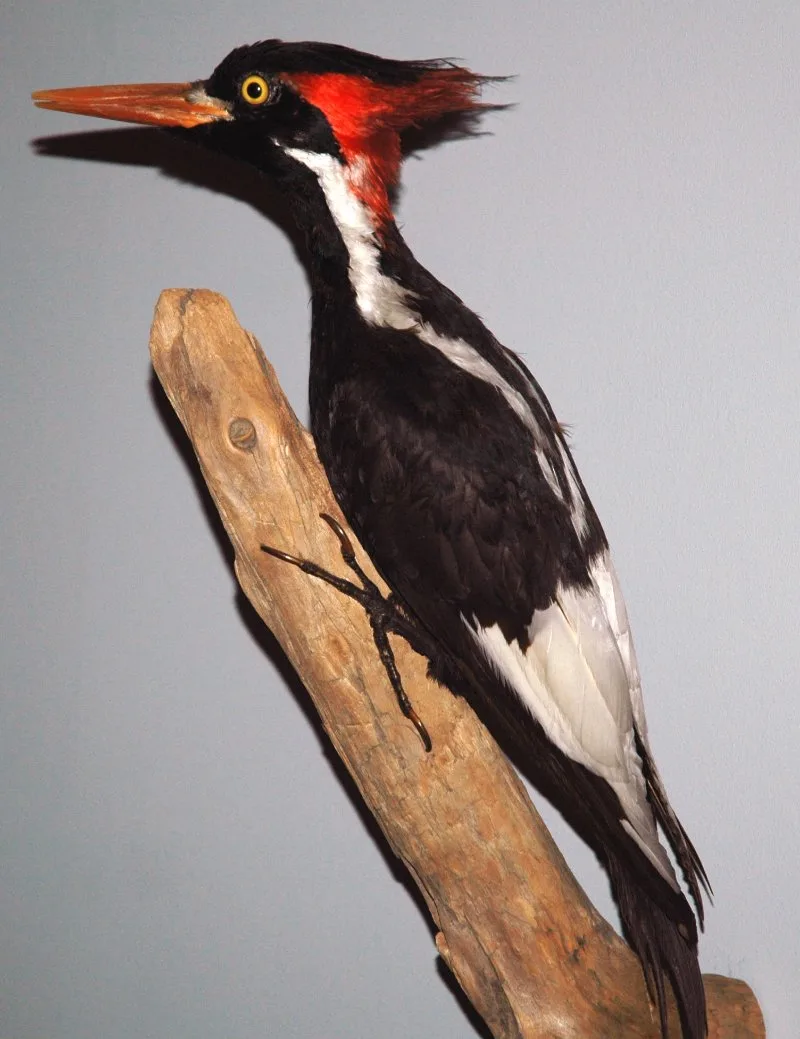
The Ivory-billed Woodpecker is one of the many birds on the endangered species list. This large bird was once found throughout the southeastern United States, but it is now thought to be extinct in the wild. The Ivory-billed Woodpecker is a beautiful bird with a long, curved bill.
It is mostly black with white wings and a white tail. The Ivory-billed Woodpecker was once a very common bird, but its population has declined drastically in recent years to the point where no wild specimens may remain.
There are many reasons for this decline, including habitat loss and destruction, pesticide use, and competition from other species. The Ivory-billed Woodpecker is now teetering on the brink of total extinction, and we must take action to protect this magnificent creature.
See Related: Forest Owlet: Why Is It Critically Endangered?
9. Kiwi
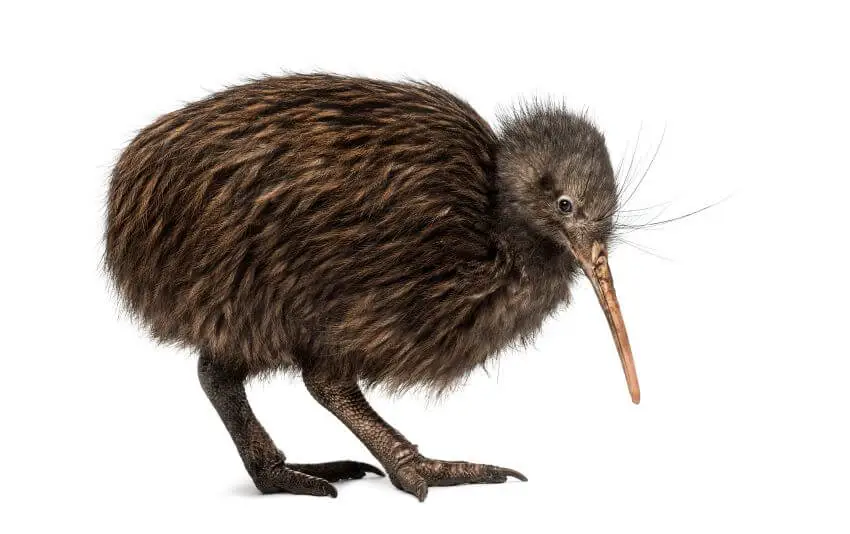
It’s no ordinary kiwi fruit but a flightless bird that is critically threatened! New Zealand is home to the most common kiwi species as well as the major efforts to conserve this bird species.
It is a great relief that the New Zealand government is boosting conservation and having a new project aiming to swell the birds’ population to 100,000 by 2030.
The kiwi face three primary dangers driving them to extinction: predation, the destruction of their natural environment, and the separation of their population into smaller groups.
10. Great Curassow
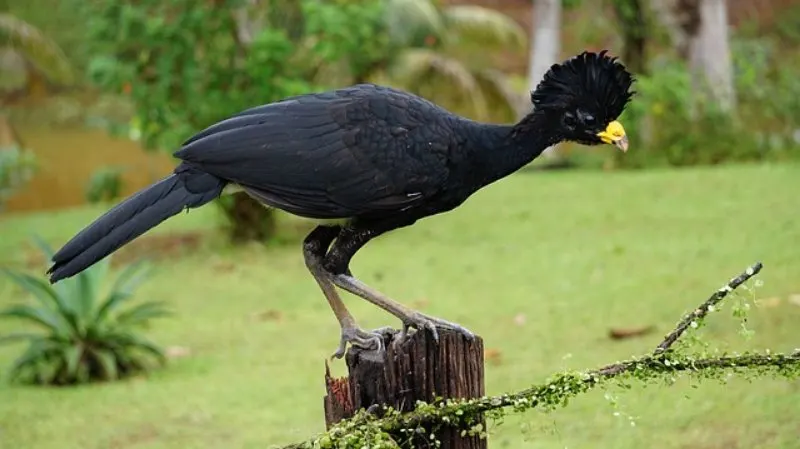
Great curassows are spectacular birds that are sadly becoming increasingly rare. They are found in Mexico, Colombia, and Ecuador, but their numbers are dwindling due to deforestation.
The Great Curassow is a threatened species, and The International Union for Conservation of Nature has classified it as ‘vulnerable.’ This means that its numbers in the wild are plummeting.
The primary threat to the Great Curassow is habitat loss, as their rainforest homes are being destroyed by intensive forest activity.
See Related: Five-Letter Animals to Know Around the World
11. Regent Honeyeater
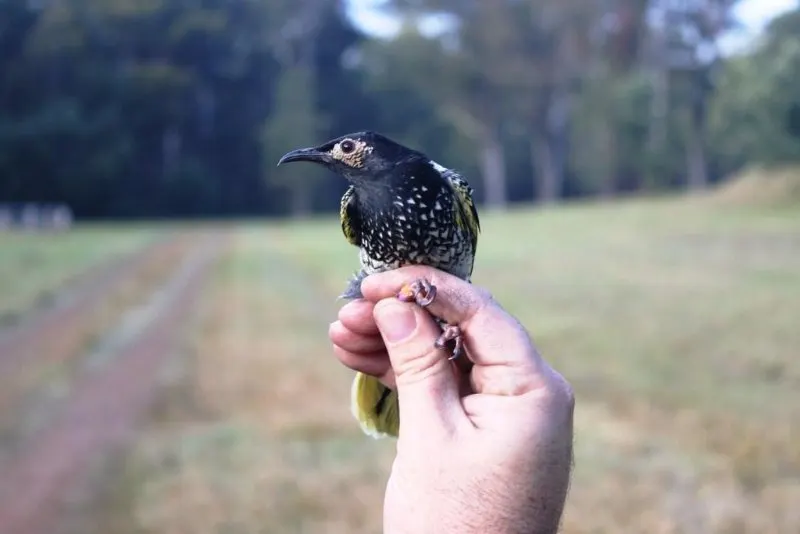
The Regent Honeyeater is a stunning bird found in South Australia. Its name derives from the delicious nectar produced by eucalyptus trees, which the Regent Honeyeater loves to feast on. These species are social creatures, often found in large groups working together to build their hives.
Since the 20th Century, the Regent Honeyeater’s population has dwindled alarmingly due to human activity and habitat loss. Thankfully, there are still some places in Australia where you can see this magnificent creature in its natural habitat.
12. Kakapo
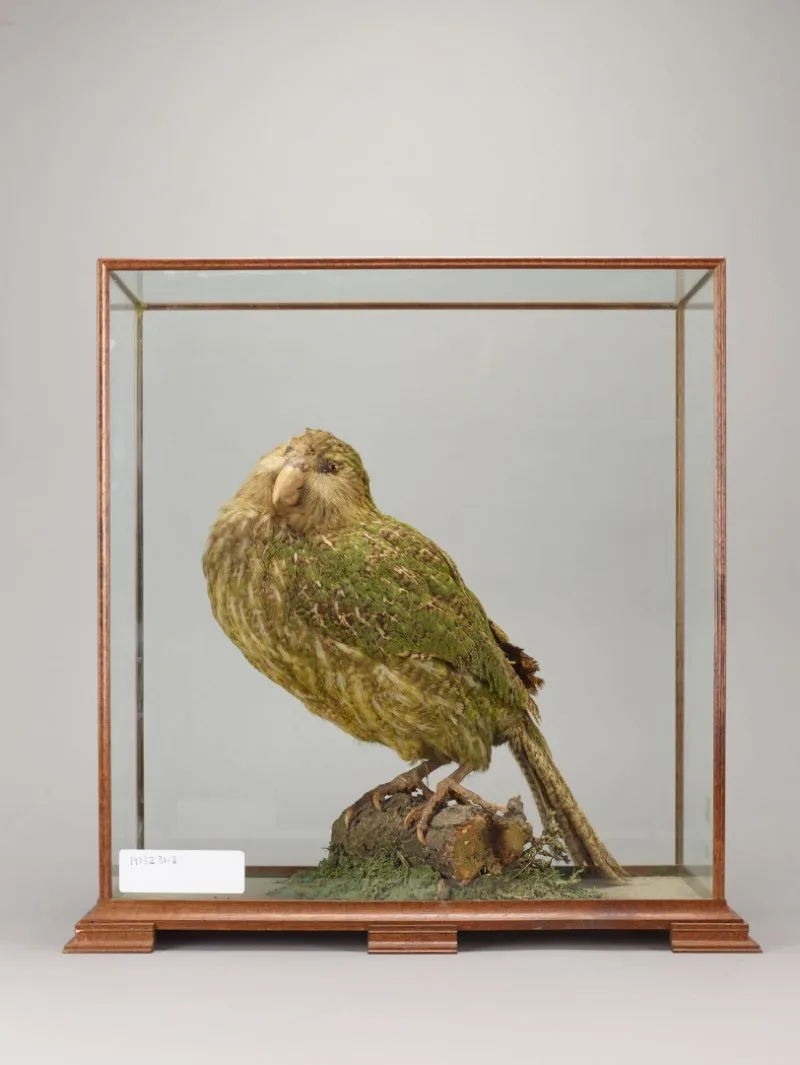
The Kakapo is a large, nocturnal, flightless parrot that is only found in New Zealand. Kakapo is the heaviest member of the parrot family and can live for up to 90 years.
Sadly, there are only 142 Kakapo left in the world. It is a critically endangered bird. Kakapo was once common in New Zealand forests, but Maori and European settlers hunted them for their meat and feathers.
Kakapo is now extinct in the wild, but their numbers are slowly increasing thanks to intensive conservation efforts to halt extinction. Each year, a few Kakapo are released into protected areas of forest land, where Conservationists closely watch them.
The Kakapo is an amazing bird, and with continued conservation efforts, we may one day see Kakapo thriving in the wild again.
See Related: Mexican Spotted Fowl: Why Is It Endangered?
13. Northern Bald Ibis
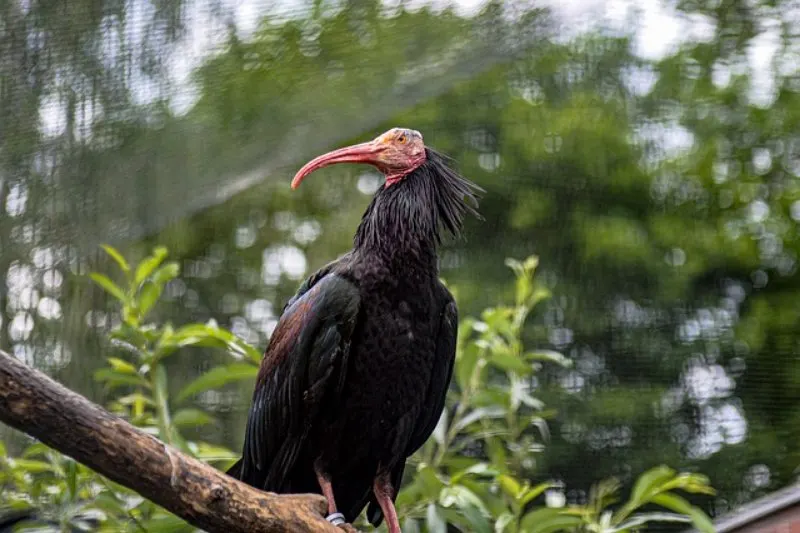
The Northern Bald Ibis is a beautiful bird with striking red and black feathers. It’s a migratory bird, spending its summers in Northern Africa or the Saudi Arabian Peninsula and its winters in Syria. But, the Northern Bald Ibis is now critically endangered, with a wild population of only 500 birds remaining.
The main threat to the species is habitat loss, as their natural habitats are being destroyed by human activity.
14. Hooded Grebe
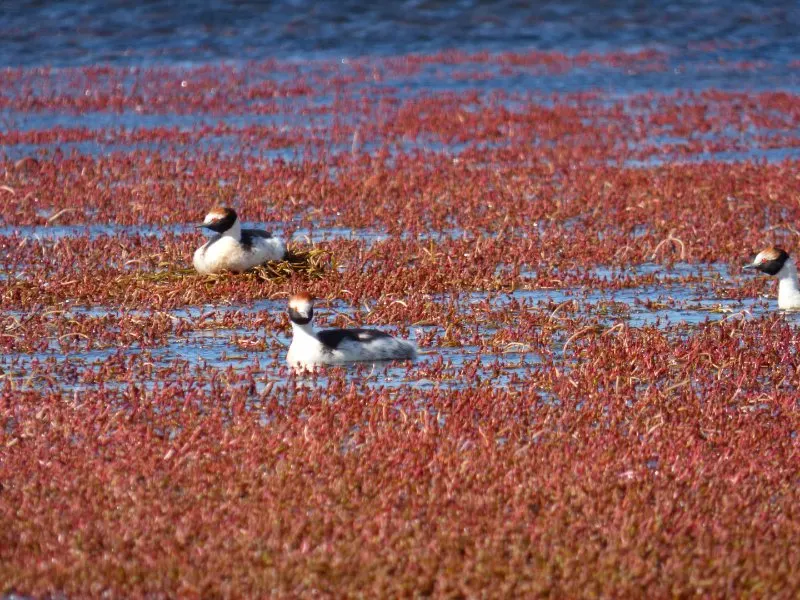
Hood grebes are an endangered species in Chilean and Argentinian Patagonia. These dazzling rare birds are as feared as the rest of these birds.
The invasive American mink has proved to be the most deadly threat to such birds. In the first years of minkes reign, the population of Hooded Grebe rapidly dropped. The bird is classified as “critically endangered.” You can view this species only through Seriema Nature Tours guided tours.
See Related: Animals That Have Gone Due to Deforestation
15. Ultramarine Lorikeets
Ultramarine Lorikeets are one of the many different types of birds in the bird wildlife that differ in their beauty and color combination.
They are found on the Marquesa islands in Mexico and once inhabited all islands on the Archipheric Archipelago. But, they are now only found on Ua Huka.
The Ultramarine Lorikeet is endangered because their natural habitats, which are rainforests and woodlands, are being cleared to make way for developments such as agriculture, housing, and roads.
In addition, the lorikeet’s diet of nectar and fruit makes them particularly vulnerable to hunting and trapping.
16. California Condor
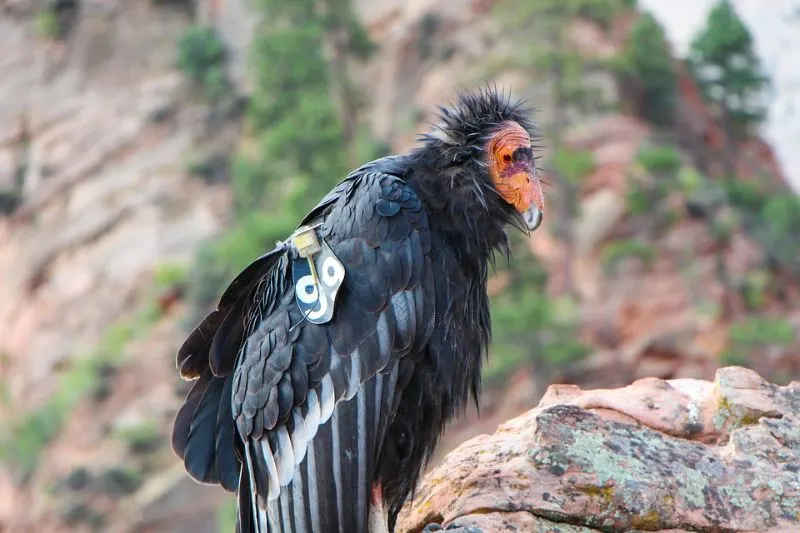
The California Condor is a giant land bird in North America and one of the most endangered birds in California. Its population is declining rapidly.
The main threats to the California Condors are lead poisoning and habitat loss. Lead poisoning occurs when birds eat carcasses that contain lead shot or fragments, and it can cause neurological damage and death.
Habitat fragmentation is a significant problem for these birds. Their breeding grounds are in mountainous areas that are being logged and developed.
Conservation projects like reintroducing condors to Zion and Grand Canyon National Park lands and protecting the condors breeding habitat are the efforts to save the bird from extinction.
See Related: Congo Peafowl: Is This Animal Endangered?
17. Whooping Crane
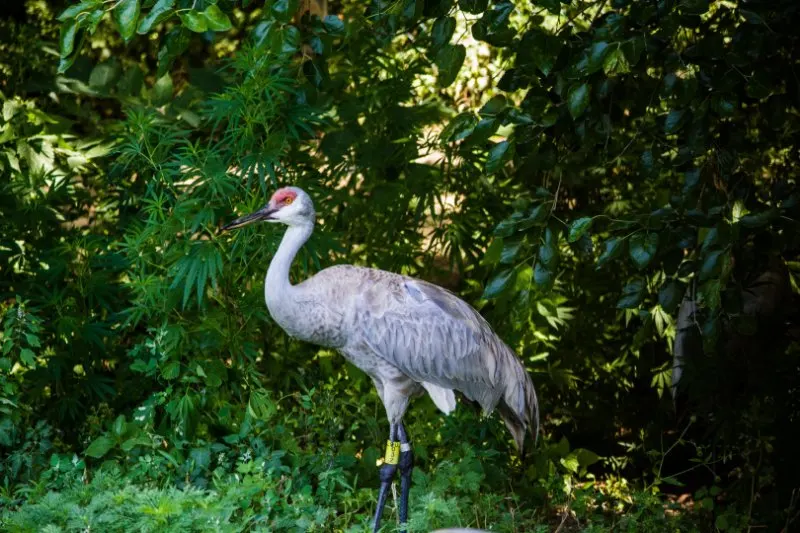
Another bird on our endangered list is the Whooping Crane. This large bird breeds in the northern parts of North America and winters in southern parts of the United States.
The Whooping Crane population has declined since the early 1900s. The main threat to these birds is habitat fragmentation and destruction.
Several conservation projects are underway to help save this species in partnership with several organizations, including the International Crane Foundation and World Wildlife Fund.
FAQ
What is the primary cause of endangered birds?
The primary cause of endangered birds is habitat loss.
How many bird species are endangered?
There are over 260 bird species that are endangered.
What are some of the most endangered birds in the world?
Some of the most endangered birds in the world include the California condor, Whooping crane, and Hooded grebe.
Related Resources
- Most Endangered Animals of Europe
- Ways to Save Animals Facing Extinction
- Do Bullet Proof Animals Exist? Here’s What You Need to Know

